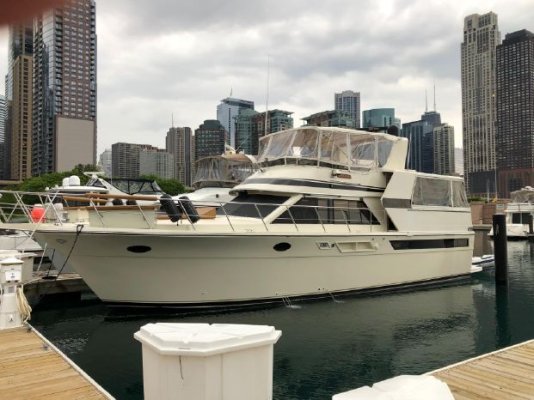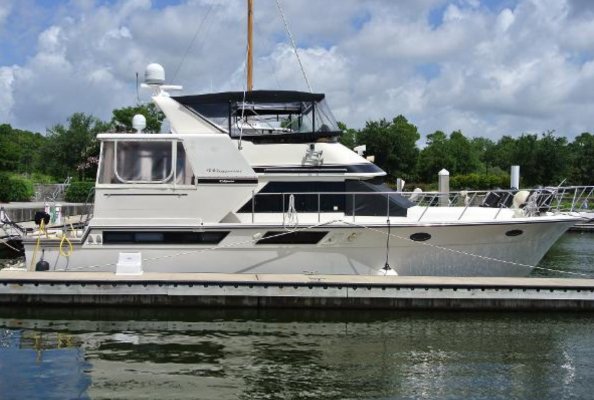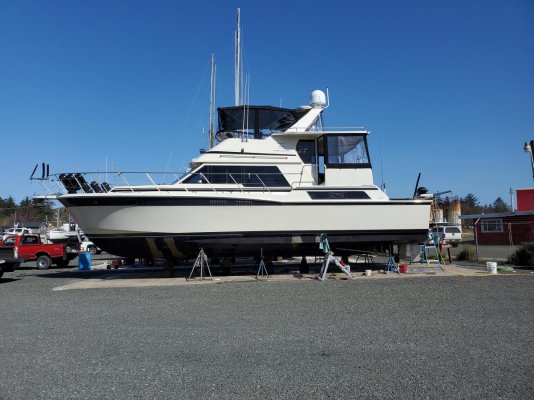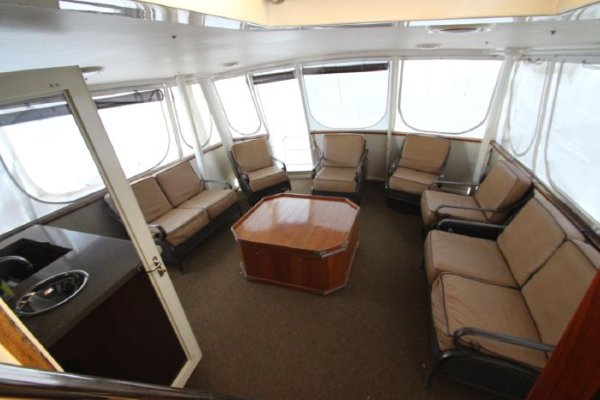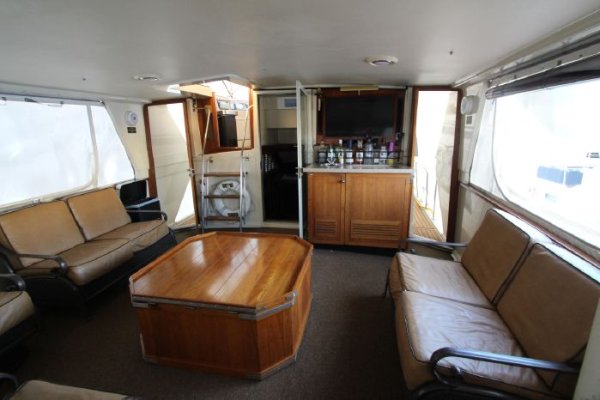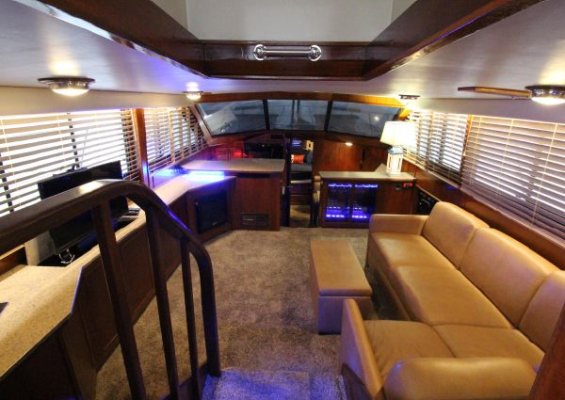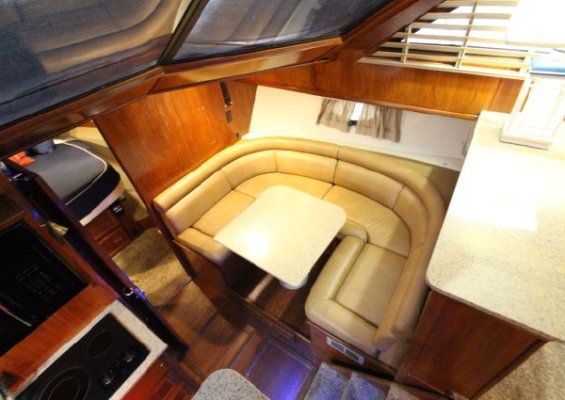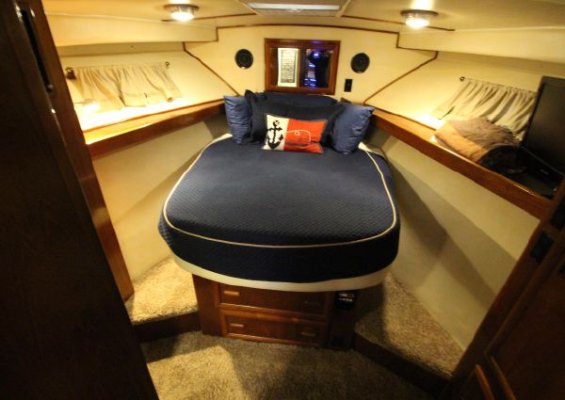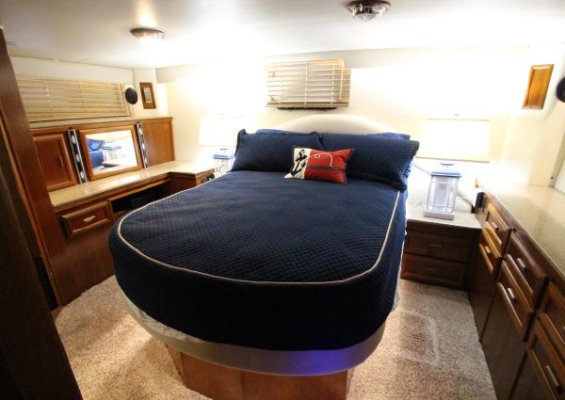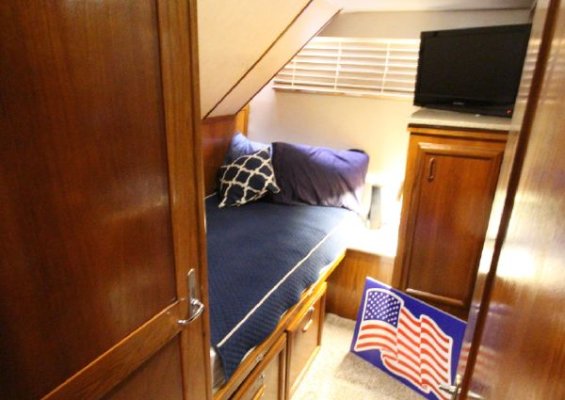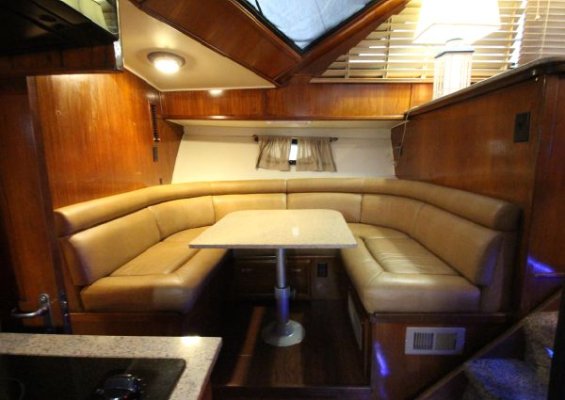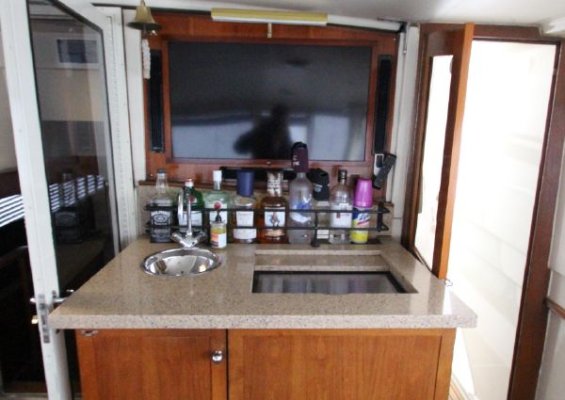Quicksilver55
Veteran Member
- Joined
- Dec 13, 2020
- Messages
- 43
- Vessel Make
- 1989 Carver Californian 48 MY
We put an offer on a 1989 Carver Californian 48-foot motor yacht today. There are 2 things I know going in. There is a soft spot in the deck under the sun cushion Snaps that tore loose new ones added old ones not sealed. A little soft but hard to tell in 7-degree weather. Boat's 32 years old, I would expect a couple of things wrong. plan on drilling, drying, and injecting some compound to firm up the core and re-gelcoat. area is 20 x 20 reinstall the snaps and cover with the sun pad. Also, some stress cracks on the angles gel coat under the windshield. I am going to assume the windshield needs to be re-sealed. In general, the caulking around the joints should redone IMO. Any insight would be helpful to know what I am in for.

